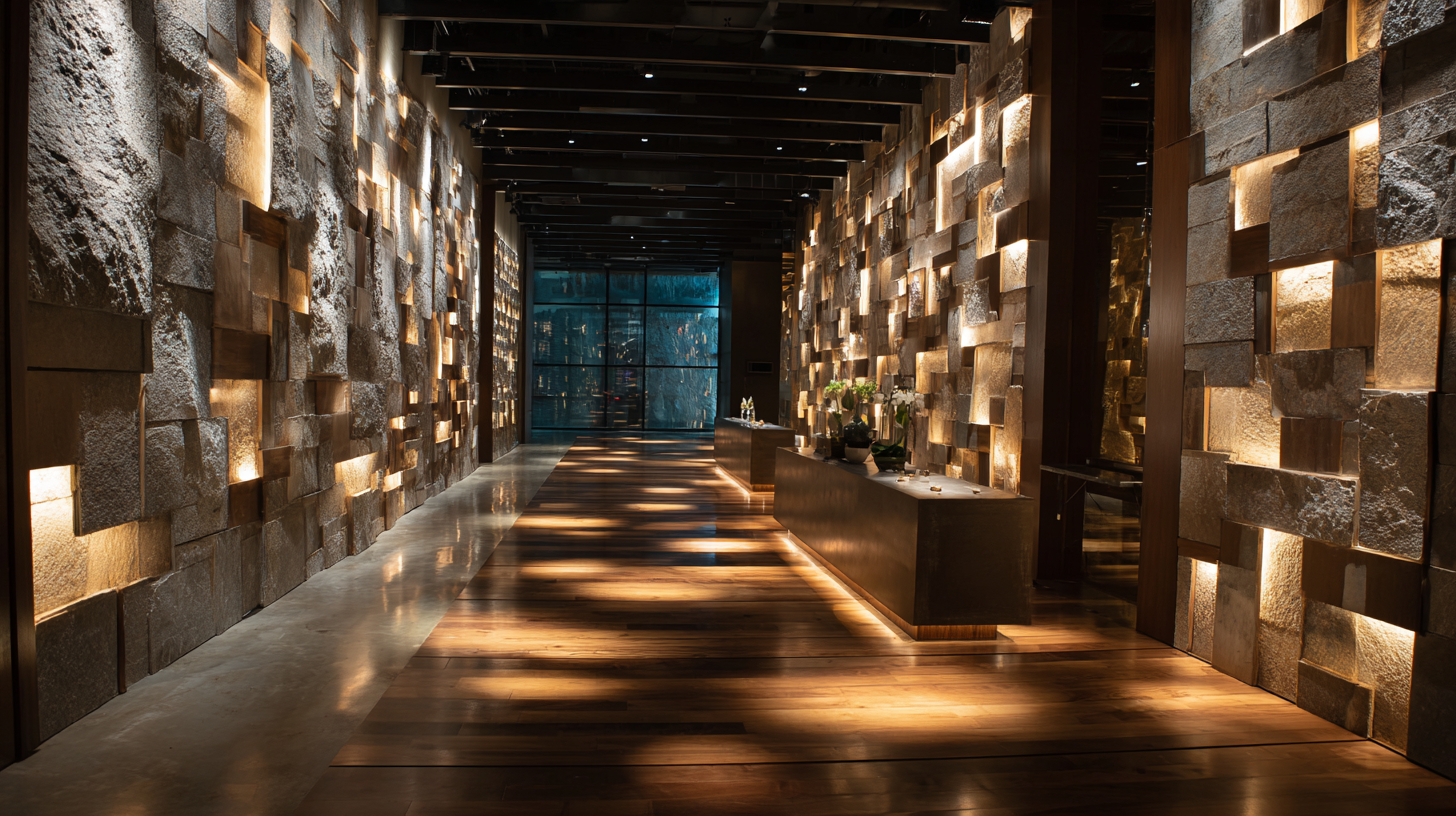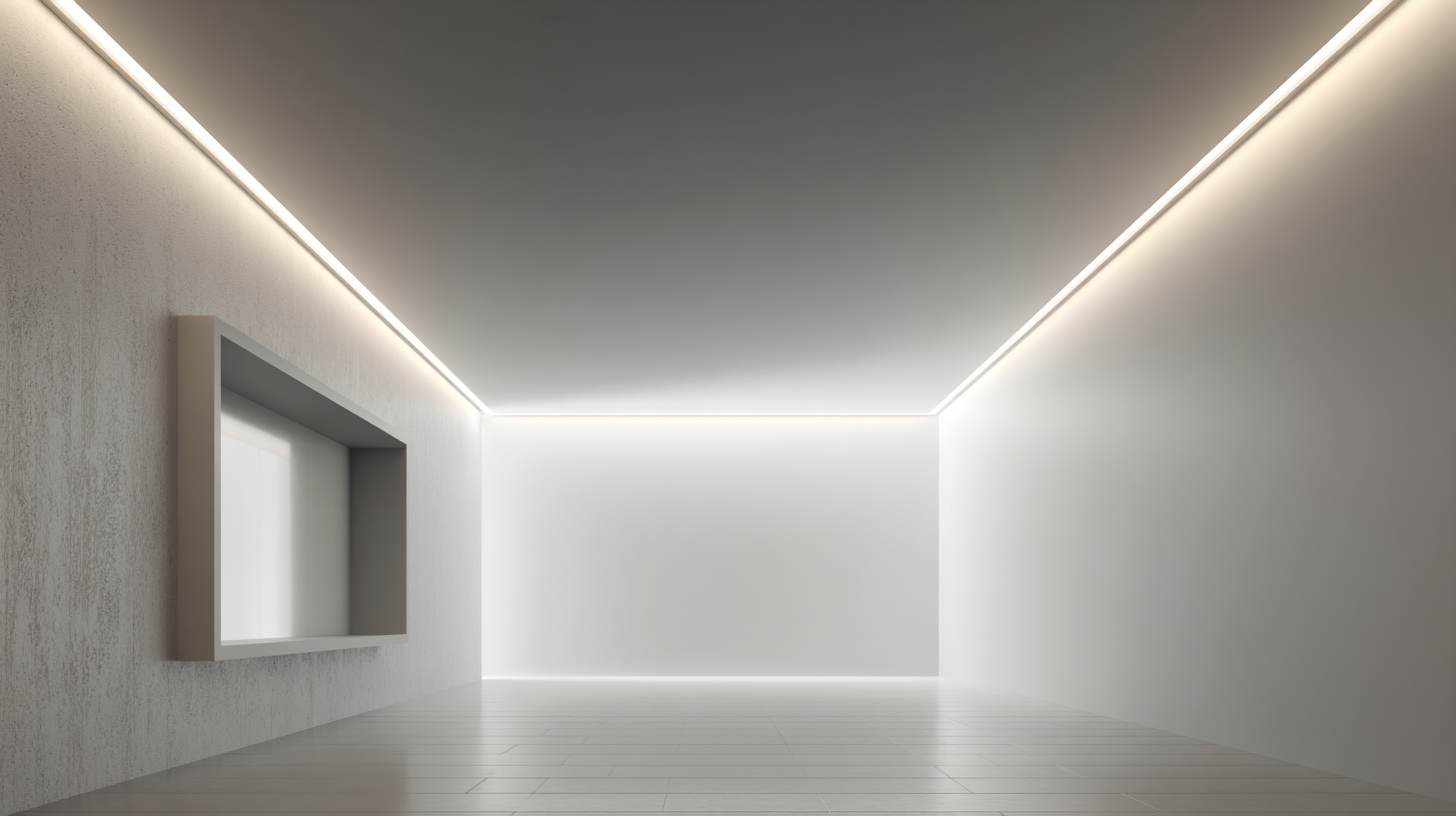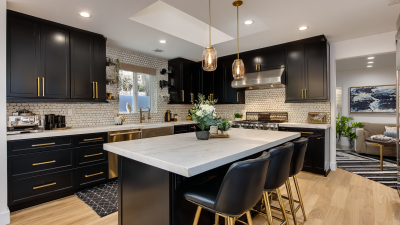Transform Your Space: Exploring the Energy Efficiency of LED Wall Lighting with 80% Savings
 In the quest for enhanced energy efficiency, LED wall lighting has emerged as a transformative solution for both residential and commercial spaces. According to a report by the Department of Energy, transitioning to LED lighting can lead to energy savings of up to 80% compared to traditional incandescent and fluorescent bulbs. This significant reduction not only lowers electricity bills but also contributes to a more sustainable environment by decreasing greenhouse gas emissions. As urban spaces grow and energy demands rise, adopting LED wall lighting becomes increasingly crucial. The versatility and durability of LED wall fixtures offer a modern aesthetic while ensuring long-lasting performance, making them an ideal choice for any setting. By harnessing the power of advanced lighting technology, property owners can redefine their environments while embracing significant cost savings.
In the quest for enhanced energy efficiency, LED wall lighting has emerged as a transformative solution for both residential and commercial spaces. According to a report by the Department of Energy, transitioning to LED lighting can lead to energy savings of up to 80% compared to traditional incandescent and fluorescent bulbs. This significant reduction not only lowers electricity bills but also contributes to a more sustainable environment by decreasing greenhouse gas emissions. As urban spaces grow and energy demands rise, adopting LED wall lighting becomes increasingly crucial. The versatility and durability of LED wall fixtures offer a modern aesthetic while ensuring long-lasting performance, making them an ideal choice for any setting. By harnessing the power of advanced lighting technology, property owners can redefine their environments while embracing significant cost savings.
Benefits of LED Wall Lighting: Understanding Energy Efficiency and Cost Savings
LED wall lighting has emerged as a frontrunner in energy efficiency, boasting significant cost-saving potential for both residential and commercial spaces. According to the U.S. Department of Energy, LED lighting can save up to 80% in energy costs compared to traditional incandescent bulbs. This impressive reduction is not only beneficial for the environment but also translates into substantial financial savings over time. A recent report highlighted that if all American households replaced their incandescent bulbs with LEDs, the nation could save $6 billion in annual energy costs.
Moreover, the longevity of LED fixtures further enhances their appeal. With a lifespan of up to 25,000 hours, LEDs significantly outlast traditional lighting options, which typically require more frequent replacements. This durability results in fewer waste products, contributing to a reduced carbon footprint. The Energy Star program has confirmed that switching to LED lighting can prevent greenhouse gases equivalent to the emissions from over 1 million cars annually. As businesses and homeowners alike make the switch, it's clear that LED wall lighting not only brightens spaces but also promotes a more sustainable and economically efficient future.
Transform Your Space: Exploring the Energy Efficiency of LED Wall Lighting with 80% Savings - Benefits of LED Wall Lighting
| Feature |
LED Wall Lighting |
Traditional Wall Lighting |
| Energy Consumption (W) |
12 |
60 |
| Lifespan (Hours) |
50,000 |
1,000 |
| Annual Energy Cost (USD) |
14.40 |
72.00 |
| CO2 Emissions (lbs/year) |
11.52 |
57.60 |
| Savings Over 10 Years (USD) |
- |
576.00 |
Comparative Analysis: LED Wall Lighting vs. Traditional Lighting Solutions
LED wall lighting has rapidly gained popularity as an energy-efficient alternative to traditional lighting solutions. According to the U.S. Department of Energy, LED lighting can use up to 80% less energy than incandescent bulbs, significantly reducing electricity bills and benefiting the environment. While traditional lighting options such as fluorescent and halogen lamps have their advantages, they typically have a shorter lifespan and higher operating costs. For instance, the average lifespan of an LED bulb is around 25,000 hours, while incandescent bulbs only last about 1,000 hours. This longevity translates to fewer replacements and less waste, making LEDs a smarter investment over time.
**Tips:** When considering a transition to LED wall lighting, look for Energy Star-certified products to ensure maximum efficiency and quality. Additionally, consider dimmable LED options which allow for further energy savings by enabling you to adjust brightness according to your needs, optimizing both comfort and efficiency.
Furthermore, the advancements in LED technology have led to improved light quality and color rendering, reminiscent of traditional lighting but with significant energy savings. Reports indicate that LEDs can produce the same amount of light as traditional bulbs while consuming a fraction of the energy, contributing to a greener planet. The choice is clear: adopting LED wall lighting not only enhances the aesthetics of your space but also supports sustainable energy use effectively.
**Tips:** Don’t forget to invest in smart lighting controls, which can automate your LED wall lights based on occupancy or time of day. This additional layer of efficiency can lead to even more substantial energy savings in the long run.

Innovative Designs: Aesthetic Appeal of LED Wall Lighting in Modern Spaces
Innovative designs play a crucial role in the aesthetic appeal of LED wall lighting within modern spaces. With their sleek forms and vibrant color options, LED wall lights not only illuminate a room but also enhance its overall décor. According to a report from the U.S. Department of Energy, adopting LED lighting can reduce energy usage for lighting by up to 75% compared to traditional incandescent fixtures, ensuring that design does not come at the expense of efficiency. This has led many designers to creatively incorporate LEDs into wall fixtures, seamlessly blending functionality with style.
The versatility of LED wall lighting allows for diverse applications that cater to various design needs. From minimalist designs that complement contemporary interiors to more elaborate fixtures that serve as statement pieces, LEDs offer endless possibilities. A study published by the Lighting Research Center indicates that well-designed lighting can increase productivity and mood, making the integration of aesthetically pleasing LED wall lights even more crucial in workplaces and homes alike. By prioritizing design in energy-efficient lighting solutions, modern spaces can achieve both beauty and sustainability.
Energy Efficiency Comparison of Lighting Technologies
This bar chart illustrates the energy consumption in watts per square meter of different lighting technologies, highlighting the significant savings offered by LED wall lighting.
Practical Tips for Implementing LED Wall Lighting in Your Home or Business
Implementing LED wall lighting in your home or business can greatly enhance both ambiance and energy efficiency. First, it's essential to assess the areas where you plan to install the lighting. Consider high-traffic zones like hallways or entryways, as well as places where you want to highlight art or architectural features. Select fixtures that complement your space's design while ensuring they provide adequate illumination. Additionally, make use of smart controls, such as dimmers and motion sensors, to maximize energy savings while tailoring the light output to your needs.
Another practical tip is to focus on color temperature when choosing LED wall lights. Warmer tones can create a cozy atmosphere in living spaces, while cooler shades might be more suitable for commercial environments where productivity is key. Don’t forget about maintenance; LED lights typically require less frequent replacement, but regular cleaning of fixtures will optimize their performance. Embracing these practical strategies not only enhances aesthetics but also contributes significantly to energy conservation, allowing you to enjoy up to 80% savings compared to traditional lighting options.
Future Trends: The Evolution of LED Technology and Sustainability in Lighting
As LED technology continues to evolve, its role in promoting sustainability within the lighting industry becomes increasingly significant. The global office lighting market is projected to grow from USD 75.91 billion in 2025 to approximately USD 92.49 billion by 2033, with a compound annual growth rate of 2.5%. This growth is largely driven by the shift towards energy-efficient solutions such as LED lighting, which can provide up to 80% energy savings compared to traditional lighting options. This remarkable efficiency not only leads to reduced electricity consumption but also supports broader initiatives aimed at achieving net-zero carbon emissions in urban environments.
Additionally, advancements in LED technology are enhancing other sectors, including automotive and healthcare. The development of innovative LED surgical headlamps, for instance, demonstrates how LED can fill critical gaps in high-end medical lighting solutions. The evolution of lighting products, powered by the adoption of AI and IoT, is transforming urban lighting systems into smart infrastructures that integrate renewable energy and data governance. These innovations not only improve energy efficiency but also elevate the user experience, marking a crucial step toward sustainable lighting solutions in various applications.


Home
About Byone
Factory Tour
Products
Project Portfolio
Download
Blog
Contact Us
 In the quest for
In the quest for 






